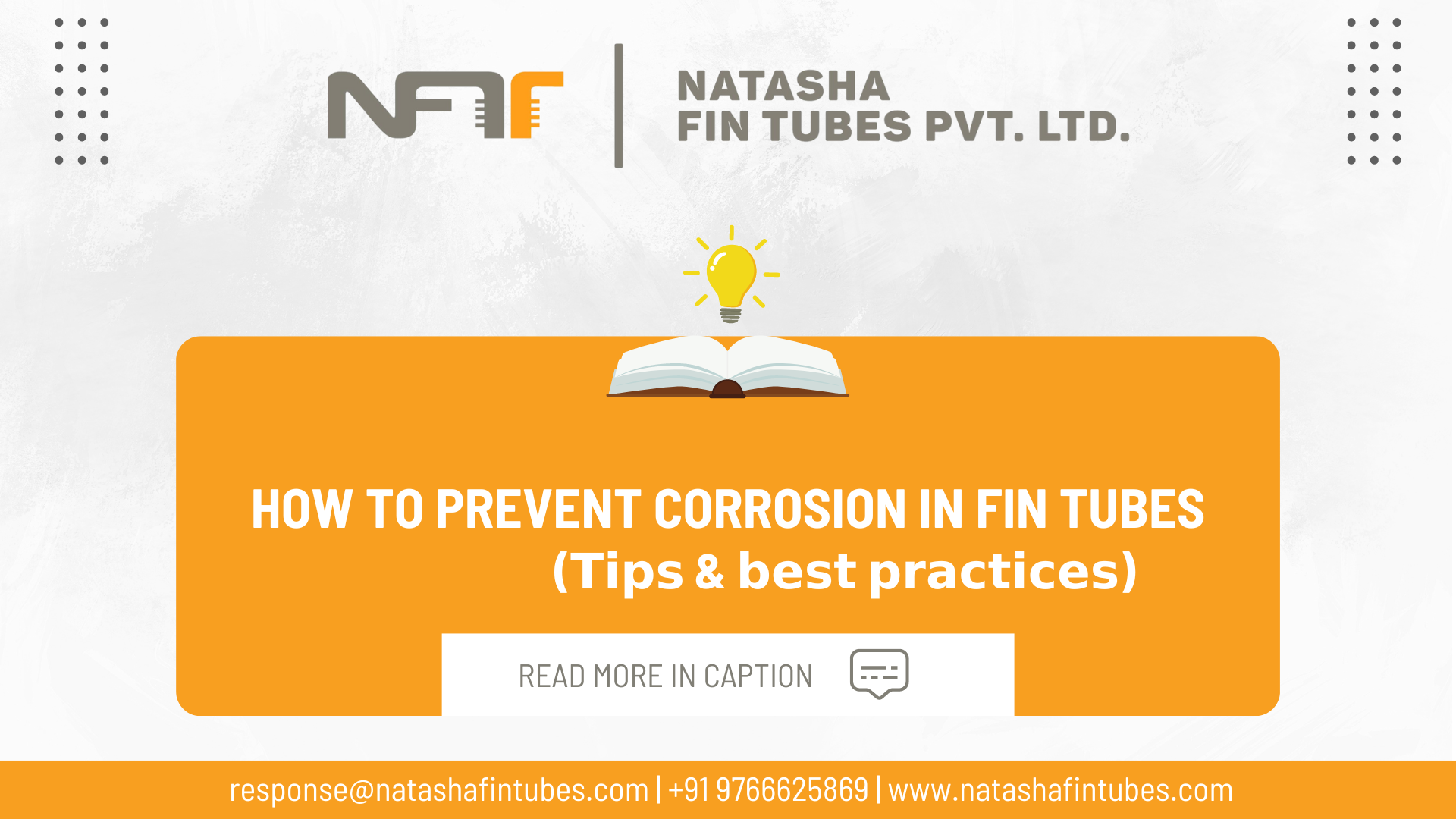Finned tubes are widely used in various industrial applications, including heat exchangers, boilers, and condensers. Their extended surface area allows for more efficient heat transfer between fluids, making them an essential component in many systems. However, one of the main challenges with finned tubes is corrosion. Corrosion can cause serious damage to the tubes, leading to decreased performance and efficiency. In this blog post, we’ll discuss how to prevent corrosion in finned tubes and share some tips and best practices.
𝗖𝗵𝗼𝗼𝘀𝗲 𝘁𝗵𝗲 𝗥𝗶𝗴𝗵𝘁 𝗠𝗮𝘁𝗲𝗿𝗶𝗮𝗹 :
The choice of material is a critical factor in preventing corrosion in finned tubes. Stainless steel and other corrosion-resistant alloys are the most suitable materials for finned tubes. The use of materials that are susceptible to corrosion can lead to accelerated wear and tear and the formation of leaks. In addition, the selection of the right coating or lining system can also help prevent corrosion in finned tubes.
𝗥𝗲𝗴𝘂𝗹𝗮𝗿 𝗜𝗻𝘀𝗽𝗲𝗰𝘁𝗶𝗼𝗻 𝗮𝗻𝗱 𝗠𝗮𝗶𝗻𝘁𝗲𝗻𝗮𝗻𝗰𝗲 :
Regular inspection and maintenance of finned tubes are crucial for preventing corrosion. Inspecting the tubes for signs of corrosion and addressing them promptly can help prevent further damage. Some common signs of corrosion include discoloration, pitting, and rusting. In addition, keeping the tubes clean and free from debris and deposits can also help prevent corrosion.
𝗣𝗿𝗼𝗽𝗲𝗿 𝗜𝗻𝘀𝘁𝗮𝗹𝗹𝗮𝘁𝗶𝗼𝗻 :
Proper installation is another critical factor in preventing corrosion in finned tubes. The tubes should be installed according to the manufacturer’s instructions and in compliance with industry standards. The installation should be carried out by experienced professionals who have the knowledge and skills to prevent damage to the tubes during the process. Proper installation can help prevent damage to the tubes, which can lead to corrosion.
𝗠𝗮𝗶𝗻𝘁𝗮𝗶𝗻 𝗣𝗿𝗼𝗽𝗲𝗿 𝗙𝗹𝘂𝗶𝗱 𝗖𝗵𝗲𝗺𝗶𝘀𝘁𝗿𝘆 :
The chemistry of the fluids circulating through the finned tubes can also affect their corrosion resistance. The pH, temperature, and other chemical properties of the fluids should be maintained within the recommended range. Using additives or chemicals that can inhibit corrosion can also help prevent damage to the tubes.
𝗖𝗼𝗻𝘀𝗶𝗱𝗲𝗿 𝗖𝗮𝘁𝗵𝗼𝗱𝗶𝗰 𝗣𝗿𝗼𝘁𝗲𝗰𝘁𝗶𝗼𝗻 :
Cathodic protection is a technique used to protect metallic structures from corrosion. It involves applying a direct current to the metal, which creates an electric potential that prevents corrosion. Cathodic protection is commonly used in underground pipelines and offshore structures, but it can also be used in finned tubes to prevent corrosion.
In conclusion, preventing corrosion in finned tubes is essential to ensure their performance and longevity. Choosing the right materials, regular inspection and maintenance, proper installation, maintaining proper fluid chemistry, and considering cathodic protection are some of the best practices to prevent corrosion in finned tubes. 𝗜𝗳 𝘆𝗼𝘂 𝗻𝗲𝗲𝗱 𝗺𝗼𝗿𝗲 𝗶𝗻𝗳𝗼𝗿𝗺𝗮𝘁𝗶𝗼𝗻 𝗼𝗻 𝗽𝗿𝗲𝘃𝗲𝗻𝘁𝗶𝗻𝗴 𝗰𝗼𝗿𝗿𝗼𝘀𝗶𝗼𝗻 𝗶𝗻 𝗳𝗶𝗻𝗻𝗲𝗱 𝘁𝘂𝗯𝗲𝘀 𝗼𝗿 𝗿𝗲𝗾𝘂𝗶𝗿𝗲 𝗳𝗶𝗻𝗻𝗲𝗱 𝘁𝘂𝗯𝗲𝘀 𝗳𝗼𝗿 𝘆𝗼𝘂𝗿 𝗮𝗽𝗽𝗹𝗶𝗰𝗮𝘁𝗶𝗼𝗻𝘀, 𝗽𝗹𝗲𝗮𝘀𝗲 𝗰𝗼𝗻𝘁𝗮𝗰𝘁 𝗡𝗮𝘁𝗮𝘀𝗵𝗮 𝗙𝗶𝗻 𝗧𝘂𝗯𝗲𝘀 𝗣𝘃𝘁 𝗟𝘁𝗱, 𝗮𝗻𝗱 𝘄𝗲’𝗹𝗹 𝗯𝗲 𝗵𝗮𝗽𝗽𝘆 𝘁𝗼 𝗮𝘀𝘀𝗶𝘀𝘁 𝘆𝗼𝘂.
#FinnedTubes #howtopreventcorrosion #FinTubes #HeatExchangers #ThermalConductivity #bestfintubesmanufacturers #fintubemanufacturers #HeatTransferCoefficient #IndustrialApplications #NatashaFinTubes #Manufacturing #HighQuality #IndustrialProcess #EnergyEfficiency #Sustainability



